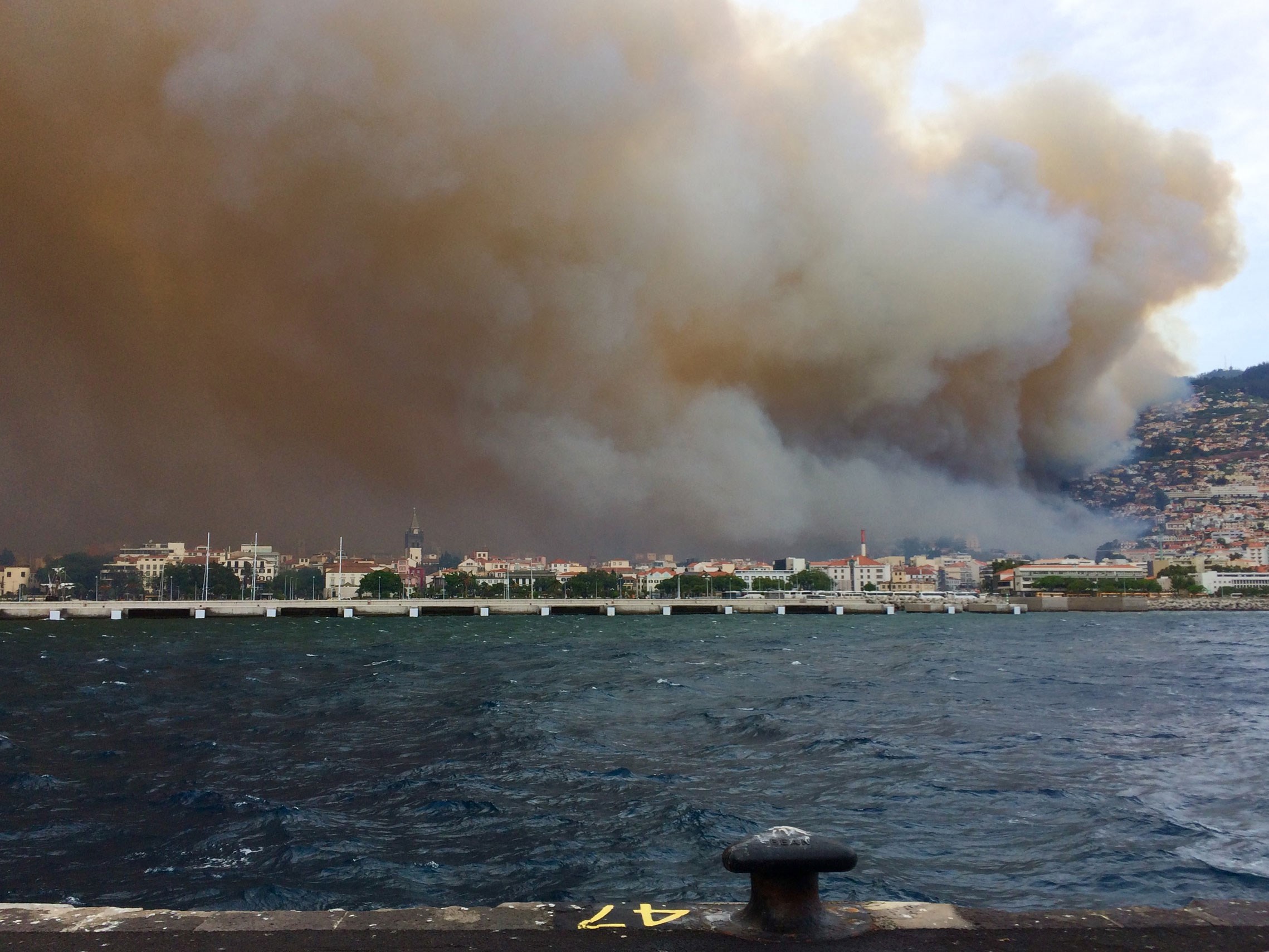CHRONICLE
What will become of us?

© Rui Campos Matos
The newsworthiness of the fire that this summer struck Madeira was not the damage caused (in 2012 the devastation was also great) but the fact that the flames threatened the old walled area of Funchal. For some hours the downtown area of the city was enveloped in an unbreathable mass of air, spreading panic among the population. This episode could have had serious consequences if it hadn’t been for the providential change in the weather conditions and the swift intervention of the fire department, extinguishing the fire across different locations. The city centre remained intact, except for 3 or 4 buildings that were already in a derelict state, and as such were more vulnerable to the embers brought by the wind. Indeed, nothing comparable to what had happened in downtown Funchal in centuries past.
In reality, fires are not a new problem in the history of the archipelago’s capital. As early as 1470, Infante D. Fernando, governor of the Atlantic Islands had determined that the houses on the flourishing Rua dos Mercadores, which were mostly made of wood and covered in straw, should be covered with roof tile. Apparently this directive did not amount to much, for in the summer of 1593, on a night in which the east wind was hot and dry, a violent fire devastated the downtown area, burning 154 houses in only 4 hours, including the “best and more prominent of the whole city”, as referred by António Aragão in his history of Funchal. The devastation was so great that the episode persists in the local toponymy, with street names such as Queimada de Baixo (lower burning) and Queimada de Cima (upper burning). Throughout the 17th Century houses made of wood and culm were gradually substituted by stone and lime constructions covered with roof tiles, making the propagation of flames more difficult. Every once and a while, here and there a leftover house would burn, but the masonry structure remained standing and the city survived, as it did this summer (and as it will continue to do so).
However, the fires continued to devastate the urban peripheries, dispossessed of their more resistant endemic vegetation. Father Augusto da Silva recounts a monstrous fire that in the summer of 1919 ravaged Funchal’s perimeter: “on Monte and in São Roque it took on truly terrifying proportions, encompassing an area of some kilometres and threatening to destroy a great number of houses”. Similarly to what happened this year, it is shocking. Can nothing be done to prevent this type of tragedy?
Everything indicates that something can be done. To begin with it is important to identify the problem of territorial and urban planning. Funchal is a city that has undergone disorderly growth in its highest peripheries: difficult access, narrow streets, and buildings in contact with unsuitable vegetation. It would have been necessary to undergo a persistent urban requalification of these areas. Unfortunately, little or nothing has been done in the last decades. However, there is no shortage of examples of good planning in the history of the city. In 1910, the Viscount of Ribeira Brava commissioned the architect Ventura Terra to elaborate an Improvement Plan for the capital of the archipelago. For the first time, the city was approached as a whole and the restorative and modernising measures proposed aimed to adapt the old late-medieval city to a new dawn of tourism (from that plan the city inherited one of its most generous public spaces: the Avenida do Mar).
Towards the end of the 1960’s and with Fernando Couto as Mayor, the city was given its first Masterplan. In fact, Funchal was one of the first Portuguese cities to benefit from a Masterplan. Created by the team headed by architect Rafael Botelho, it was preceded by a debate open to the entire community, which took place in 1969 during the Colóquios de Urbanismo (Urbanism Colloquiums). These encompassed themes such as the protection of the old city (based on the precious survey made by António Aragão), the conservation of the Madeira farms and the preservation of the extremely unique landscape of the urban amphitheatre, all of which continue to be highly relevant. In an article published in issue 141 of Arquitectura magazine, Botelho revealed the objectives of his plan, the challenges he faced and the reaching effect it had on Portugal at the time. Half a Century later we can verify that despite the delineated strategy, it was difficult to contain the systematic destruction of the natural framework, which resulted in the “disordered dispersion of construction throughout the vast amphitheatre”.
Indeed, it was precisely because if this disordered dispersion, which is the result of 40 years of mismanagement, faulty planning and short-sightedness, that we are now paying with human lives and the destruction of patrimony every time a fire or alluvium afflicts the city. This is what happened in February 2010 (alluvium), July 2012 (fire), August 2016 (fire), and if the current urban and territorial planning policy of the Island is not changed, this is what will continue to happen during the next decades. On the afternoon of that fateful 9th of August, witnessing the city engulfed in a cloud of smoke, I decided to venture onto the edge of the pier so that I could try to understand what was happening to the city, seeing that there was no official information. On the way I found disoriented and panicking people, not knowing where to go. Many, like me, took refuge on the pier. Near the ocean the wind was blowing with such intensity that I had difficulty taking the picture that accompanies this piece. A man came up to me, with tears in his eyes and probably in a state of shock and said: “I only had time to save my mother, I left everything I own behind! What will become of us?” I couldn’t answer him. Unfortunately the question remains without an answer. ◊